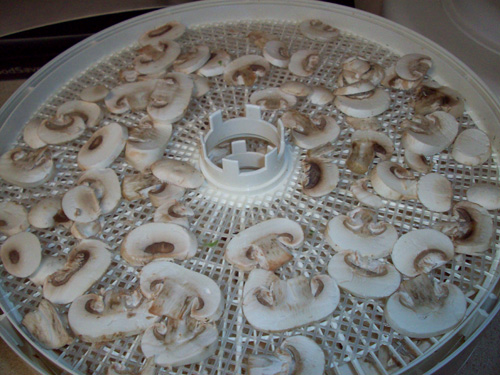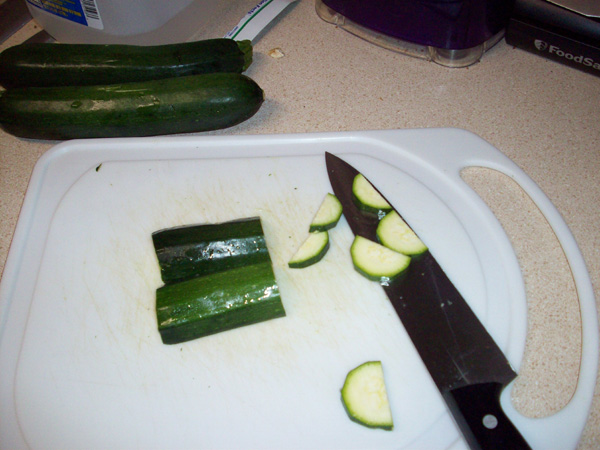Dehydrating Vegetables: Using the Sun, an Oven or a Dehydrator to Dry Vegetables
Over the years, dehydrating vegetables continues to be a popular way to store healthy foods for long periods. With more people becoming health conscious, many of them see this as a good way to have vegetables as snacks. Just about any vegetable is suitable, but some good types for this preservation method are:

- Cauliflower
- Carrots
- Corn
- Zucchini
- Beets
- Mushrooms
- Peppers
- Onions
- Beans
- Peas
Preparing Vegetables for Drying
Before anything else, you need to select the right vegetables for drying. Choose those that are mature, with the texture that you prefer. Overly mature vegetables will not generally be good candidates for dehydration. The first step in the dehydrating vegetables preparation process is to wash and clean them.
Steps to Dehydrating Vegetables
Even though there are different processes for drying vegetables, there are many common steps. The three most common methods are using an oven, a dehydrator or placing them in the sun. The sun process can involve using direct sunlight or a solar drying apparatus. The preparation steps:

- Cut your vegetables to roughly the same size and thickness to ensure even drying
- Pretreat vegetables by blanching them in hot water for approximately 5 minutes. This method tends to remove nutrients so make use of the water if you can. Steam blanching is better for keeping nutrients, but it takes longer. To steam vegetables, place them in a wire basket over a pot of boiling water. Do not allow the vegetables to touch the water, cover the pot tightly, and remove them when the pieces are tender. This will help them keep their color as well as speed up the drying time. For added flavor, you can use salt, pepper and herbs.
- Place the pieces onto trays but do not put them too close to each other
- Place the trays in the drying device such as a dehydrator, oven, solar drying box or in sunlight.
Methods of Dehydrating Vegetables
A Dehydrator
If using a dehydrator set it at about 150 degrees and follow the instructions that come with the equipment. Test the dryness by taking out a piece and seeing if it is crisp.
An Oven
Preheat the oven between 150 degrees to 200 degrees before you put in the tray. Most ovens are able to dry four to six pounds of vegetables at one go. Once the trays are in the oven, you can leave the door open a few inches to aid the drying process by releasing moist heat. Turn the vegetables every few hours and if you can, switch the position of the trays every two or three hours, that is, put the one on the top shelf on the bottom shelf and vice versa.
The Sun
Place the pieces in the tray on a windowsill or any other area where there is adequate sunlight. Cover the tray with cheesecloth to protect against insects and dust. Since air circulation is important, raise the trays to enable proper airflow.
It is important to remove the trays if it starts to rain to keep the vegetable pieces dry. Move them indoors at nighttime as well, as you want to prevent any moisture from forming on the pieces.
This method of drying can take anywhere from two to four days to work and even longer depending on the temperature. Sun drying works best in areas with temperatures over 100 degrees Fahrenheit with very little humidity. Periodically move the pieces around to improve the drying process.
The drying period can be up to 12 hours or more per batch, or even longer depending on the method. Test the vegetables only when cool, as the warm pieces will feel soft. When the dehydration is complete, the vegetables should feel dry and a bit hard.
Place them in an airtight container for a week and shake them daily. Check for signs of moisture and if you see any, put them back in the oven to complete the drying process. Finally, when the drying is complete, put the pieces in airtight containers and store in a cool place.
Note: The period of pre-treatment and drying will vary depending on not only the method but also the type of vegetables. With a little trial and error, you will find the technique and times that work best for various types. For example, onions do not need pretreatment, but soybeans need at least 10 minutes of steaming.
Dehydrating vegetables is not only a good way to prevent food wastage, it is one of the best ways to stockpile food for times when supplies are short. Changes in the season and destruction of food supplies resulting from disasters can limit the availability of vital items. With this method, you can have vegetables to add to other recipes when you need them.
Return from Dehydrating Vegetables to DIY Survival Food






New! Comments
Have your say about what you just read! Leave me a comment in the box below.